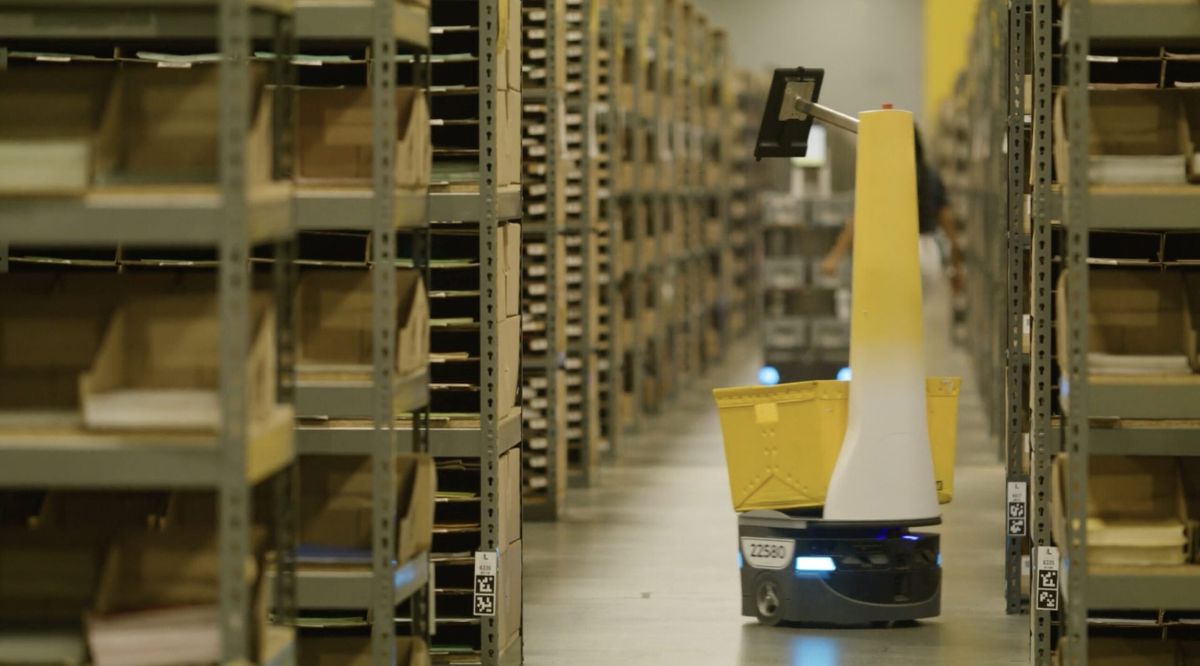
The integration of robotics and autonomous technology is transforming supply chain logistics, warehouses, and manufacturing operations at an unprecedented pace. Technologies like autonomous mobile robots (AMRs), autonomous forklifts, and self-guided vehicles (SGVs) are no longer futuristic concepts—they’re here and reshaping the industry as we move into 2025.
However, a common misconception is that these advancements aim to replace human labor. In reality, robotics and automation are designed to complement the human workforce, enabling employees to focus on higher-value tasks requiring problem-solving, creativity, and interpersonal skills.
Robotics and autonomous technology are shaping the industry. Let’s take a look at the benefits they bring, and why the human workforce remains an essential part of the equation.
The Surge of Robotics in 2025
As businesses face increasing pressure to deliver faster, more accurately, and at lower costs, the adoption of robotics and autonomous technologies is accelerating. Here’s a snapshot of what’s driving their adoption:
- Rising Labor Costs: Robotics reduce operational expenses by automating repetitive tasks, alleviating the financial pressure of rising wages.
- Labor Shortages: With worker shortages across manufacturing and logistics, robots are filling gaps while supporting human teams.
- Demand for Speed and Accuracy: Robotics bring consistency and efficiency to tasks like picking, sorting, and transporting goods.
Key Technologies Leading the Charge
Several robotic and autonomous technologies are dominating the supply chain landscape in 2025:
- Autonomous Mobile Robots (AMRs)
AMRs are revolutionizing warehouses by independently navigating spaces to transport goods. Unlike traditional automated guided vehicles (AGVs), which require set paths, AMRs use sensors and AI to adapt to their environment dynamically.
Benefits:
- Reduces the time and effort needed for manual transportation tasks.
- Frees up workers to focus on quality control or process optimization.
- Autonomous Forklifts
These forklifts use advanced sensors and software to move materials safely and efficiently without a human driver. They’re particularly useful for repetitive tasks like pallet stacking or warehouse restocking.
Benefits:
- Enhances safety by reducing forklift-related accidents.
- Ensures consistent performance in high-volume environments.
- Self-Guided Vehicles (SGVs)
SGVs are ideal for transporting heavy materials across manufacturing plants or warehouses. These vehicles operate independently, optimizing workflows and reducing labor strain.
Benefits:
- Cuts down on labor-intensive material handling tasks.
- Integrates seamlessly into existing systems to improve operational flow.
Robots and Humans: A Collaborative Future
Despite the increasing capabilities of robotics, they are not meant to replace human workers. Instead, they complement human labor by taking over repetitive, physically demanding, or hazardous tasks, allowing employees to focus on areas where human judgment, creativity, and interaction are irreplaceable.
- Redistributing Workloads
Robots excel at tasks like lifting heavy loads, navigating long distances, or performing monotonous actions. By assigning these tasks to robots, businesses free up employees to:
- Focus on quality assurance.
- Handle customer-facing roles.
- Oversee complex processes requiring decision-making.
- Enhancing Workplace Safety
By reducing the need for humans to perform physically demanding or risky tasks, robotics significantly improve workplace safety. This not only protects workers but also reduces downtime caused by accidents.
- Upskilling Opportunities
The rise of robotics creates opportunities for workers to upskill and take on higher-value roles, such as robot operation, maintenance, and process optimization. Providing training for these roles ensures employees remain integral to operations while growing their careers.
The Benefits of Robotics and Automation
The adoption of robotics and autonomous technology brings several advantages that go beyond efficiency and cost savings:
- Scalability: Robots allow businesses to quickly scale operations to meet seasonal or unexpected demand.
- Consistency: Automated systems perform tasks with precision, reducing errors and ensuring uniform quality.
- Sustainability: Robotics optimize resource usage, reducing waste and energy consumption.
- Employee Satisfaction: Workers can focus on engaging, meaningful tasks instead of monotonous or physically taxing labor.
Preparing for 2025: Integrating Robotics into Your Workforce
For businesses considering robotics and automation, integration is key to maximizing benefits while maintaining a human-centric approach. Here’s how to start:
- Involve Your Workforce Early
Transparency is critical. Communicate the purpose of robotics and reassure employees that the goal is to enhance their work, not replace it.
- Invest in Training
Provide employees with opportunities to learn how to operate and maintain robotics. This not only upskills your workforce but also fosters a culture of innovation.
- Start Small
Pilot robotic solutions in specific areas of your operations to measure impact and refine implementation strategies. Gradual scaling ensures smoother adoption.
- Leverage Data Insights
Robotics generate valuable data on performance, efficiency, and bottlenecks. Use these insights to continually improve processes and workforce allocation.
The Human-Technology Partnership
As we look to 2025, the rise of robotics and autonomous technology marks an exciting era for supply chain logistics, warehouses, and manufacturing. By taking over repetitive tasks, robots allow human workers to focus on roles that drive innovation, customer satisfaction, and operational excellence.
This human-technology partnership isn’t about replacing one with the other—it’s about creating a collaborative environment where both can thrive.
About iJility
iJility specializes in workforce solutions tailored to the evolving needs of supply chain logistics, manufacturing, and more. Our expertise helps businesses integrate robotics and human talent seamlessly for optimal results.
Schedule a discovery call today to explore how robotics and a skilled workforce can transform your operations for the future!

